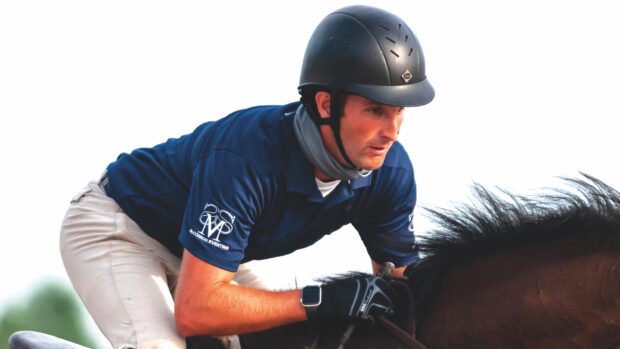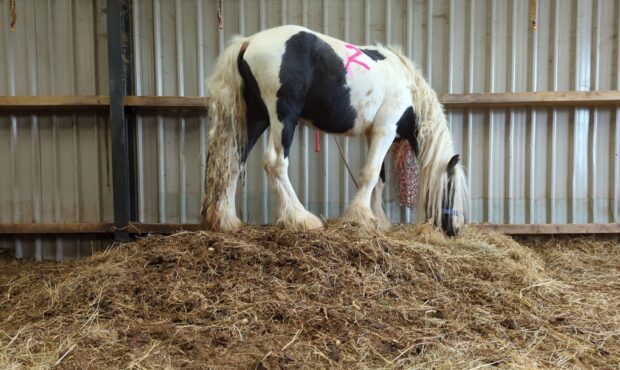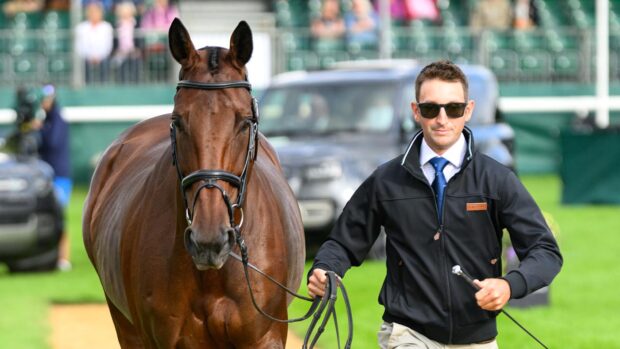An equestrian welfare group based in Finland is calling for drastic competition rule changes.
Operantit Ratsastajat ry (OpeRa) is looking to improve horse welfare and safety through changes to the use of the noseband, bit, draw reins and spurs.
The six proposals, published on the group’s website, were submitted to the Equestrian Federation of Finland (SRL) on 23 February and will be put to a vote at the SRL general meeting on 24 April.
OpeRa is urging the SRL to submit the proposals to the FEI, so that the rule changes apply to all international competitions.
The first proposal calls for the use of nosebands to be voluntary in all dressage classes.
“The noseband is not an essential piece of equipment, nor is it used to improve communication between rider and horse,” reads the statement.
OpeRa claims that a tight noseband “causes the inside of the horse’s cheeks to be pressed against the edge of the teeth and causes ulceration to the mucous membrane” and can “sensitise the horse to the bit”, as well as “interfering with the swallowing of saliva”.
The group is also recommending that the tightness of nosebands is measured at competitions, with a determined maximum permissible tightness.
OpeRa suggests that the noseband taper gauge, a tool used to measure the tightness of a noseband, developed by the International Society of Equitation Science (ISES) is used in all classes on all horses that use a noseband.
“We propose that the tightest allowed noseband is at the ‘two finger’ mark on the ISES gauge,” states OpeRa. “The FEI dressage rules state that the noseband should never be so tight as to cause injury to the horse. The rules do not, however, state how to measure the tightness of the noseband nor what the suitable tightness is. The ISES gauge guarantees an objective and accurate result and is not prone to wrong interpretation.”
OpeRa is calling for bitless bridles to be permitted in all dressage classes. The organisation asks that the dressage rules are changed accordingly, replacing the term “acceptance of the bit” with “acceptance of the bridle”.
“If bitless bridles are allowed in competition, the normal anatomy of the mouth can be left intact.”
The group is also campaigning for snaffle bridles to be allowed in all dressage classes.
“In the upper classes the rider should have the option of choosing whether to use a snaffle or double bridle,” states OpeRa. “The reason for using a curb bit and double bridle shouldn’t just be aesthetic.”
In addition, OpeRa is proposing that draw reins are banned in warm-ups of all classes.
“When the horse is forced into a position by severe pressure to the mouth, the neck muscles are tense and the normal movement of the head inherent to the gaits are prevented,” states OpeRa.
The final proposal calls for spurs to be voluntary in all dressage classes.
It claims that the use of metal spurs causes “severe pressure to the side of the horse, as the squeezing action of the leg is concentrated in a very small area”, adding that the correct use of spurs calls for great skill as they “may easily be used incorrectly and cause the horse discomfort”.
Related articles:
A spokesman from the SRL said the welfare of horses is “a core value” in its strategy.
“The board of the Equestrian Federation of Finland has taken the matter into serious consideration and sent the proposal for comments to the national dressage and eventing committees and also to the internal rules committee,” he said.
Read OpeRa’s full statement including its scientific references




